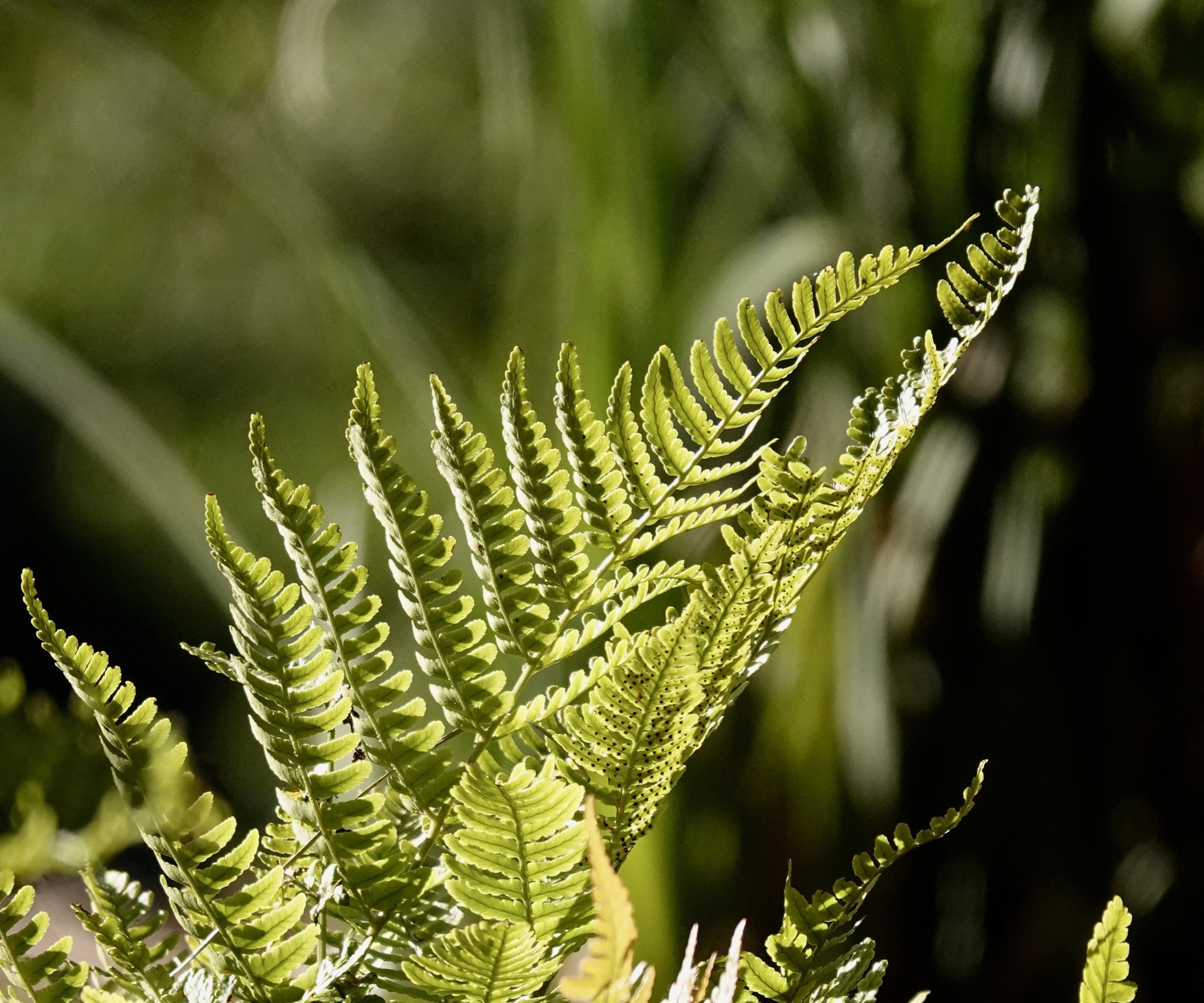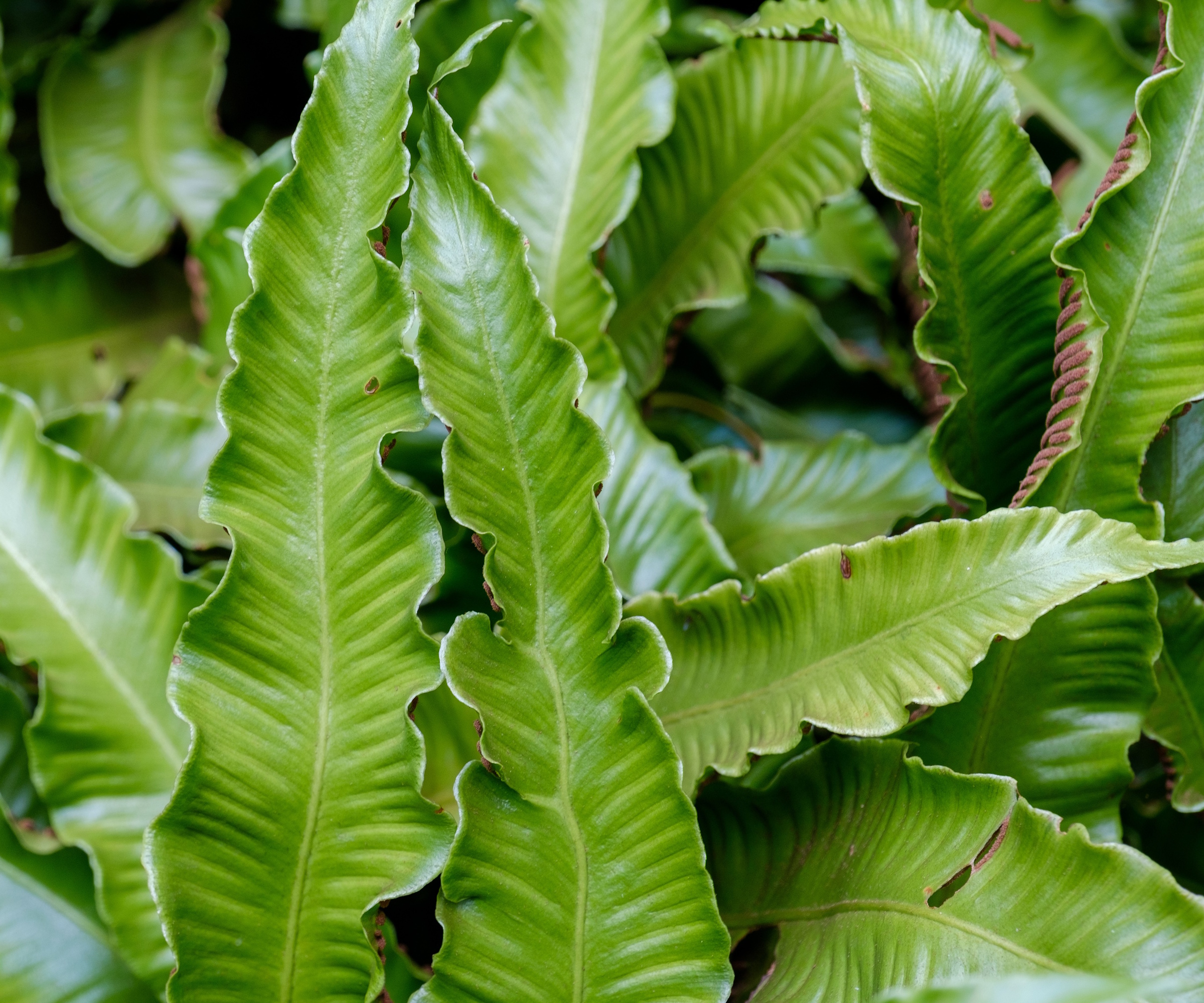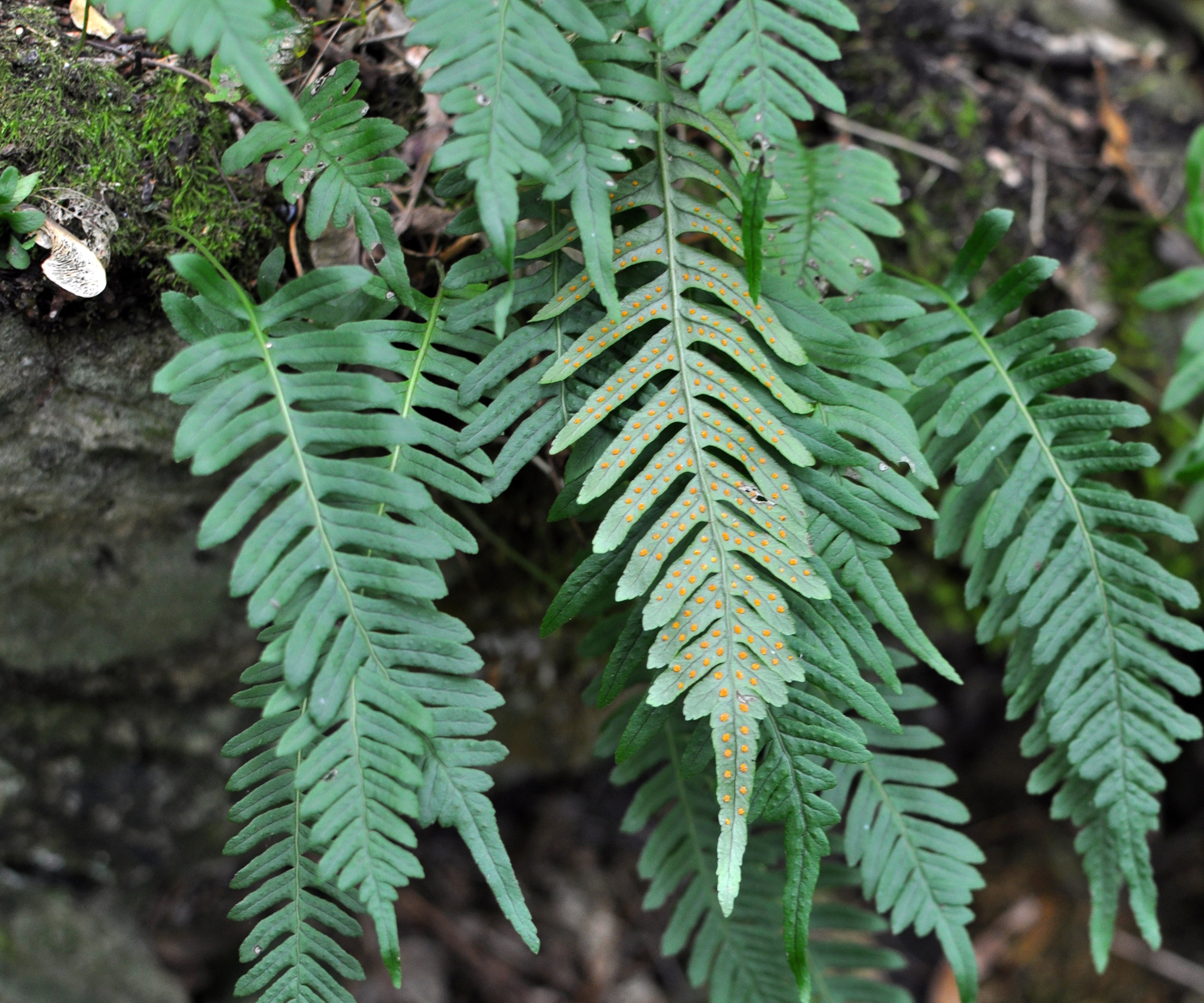Best evergreen ferns – 5 unusual options to grow for year-round greenery in your yard
Introduce one or more of these striking evergreen ferns for garden interest even during fall and winter


There are approximately 12,000 fern species growing worldwide, most of them found in forests, woodlands or tropical regions. While it would be impossible to collect all of these, most of us gardeners enjoy growing a handful of ferns in the backyard, prized for their lush foliage and tolerance of shady conditions.
As a former professional gardener, I have grown and cared for many different ferns, and while it would be impossible to pick a favorite, I have always loved the hart's-tongue fern, Asplenium scolopendrium, as seen in the image above. With thick, lush evergreen fronds, this fern can provide year-round interest even in cold, northern regions in the UK.
There are many other evergreen ferns that retain their fronds during the fall and winter months, proving useful to keep your yard looking impactful at all times of the year. So, whether you are looking for evergreen ferns for shade or perhaps you want to create a winter pot display, the following five options should be at the top of your plant wish list.

Five evergreen ferns
When considering how to grow ferns, most can be grown from US hardiness zone 3 to US hardiness zone 8. As you might already know, ferns prefer partial to full shade, tolerating gentle sunshine in the morning. Woodland beds are the ideal home for most ferns that enjoy nutrient, humus-rich and moist soils. Here are five evergreen options to add year-round greenery to your plot.
1. Autumn fern

'If you are looking for one of the best evergreen ferns to add to your collection this year, then you should meet the gorgeous autumn fern, available from Perfect Plants,' says Alex Kantor, owner of Perfect Plants Nursery.
'Boasting red and orange growth in spring, the fronds eventually mature to a lush green over summer and fall. It's a real treat to watch,' continues Alex. 'The autumn fern, Dryopteris erythrosora, can be grown from US hardiness zone 4 plus, and in milder regions, it will retain its lush fronds even during the winter months. In cooler zones, it is a semi-evergreen plant.
'One of the best plants for under trees, this fern does well with filtered sunlight and moist soil,' Alex adds. 'Autumn ferns can be grown in both pots and in the ground, but it is best to avoid direct sun. Come spring, you can give plants a trim to tidy them up if any fronds were damaged during winter.'

Alex has worked in the horticultural industry for over 20 years and grew up on the farm since his childhood years. Alex is an expert on landscape trees, shrubs, and indoor plants. He is passionate about growing and helping others learn the trade.
2. Hart's tongue fern

The hart's tongue fern, Asplenium scolopendrium, is native to the UK and Europe and can be grown from US hardiness zones 4 to 9. With glossy, untoothed evergreen fronds, it is hard not to be enamored with this fern.
I have grown hart's tongue ferns as woodland plants but also as container plants for shady yards, and can testify to this fern's resilience. In cold zones with damp soil and dark borders, the hart's tongue fern will not only survive but thrive.
Fronds tend to be 10 to 16 inches in length and remain evergreen even in northerly regions. You can prune ferns in spring, to remove any damaged or older fronds. Just be careful not to snip any new shoots that are unfurling.
Asplenium ferns are available to order from Walmart.

This organic potting soil from Happy Frog will give pots and borders a nutrient boost, complete with mycorrhizal fungi.
3. Maidenhair spleenwort

Maidenhair spleenwort, or Asplenium trichomanoides, is found growing around the world. This miniature fern will often grow no bigger than six inches in height, yet despite its diminutive size, it is one of the toughest species. It can grow as low as US hardiness zone 3, including in Montana, Wyoming and Alaska, where winter freezes can prove challenging.
As could be said of all the species listed here, the maidenhair spleenwort is one of the best shade plants, growing just fine in dark borders or along shady walls. As you can see in the image here, this species is ideal for growing in cracks and crevices, helping to add a natural, green touch to hard landscaping elements.
Try growing alongside different types of moss, in a west–facing, east–facing or north–facing stone wall. Maidenhair spleenwort plants and rhizomes are available to order from Amazon.
4. Common polypody

The common polypody fern, or Polypodium vulgare, is another of the evergreen ferns to consider. It can grow to 12 inches in height, producing lance-shaped dark green fronds. If you are looking for unusual foliage plants or are keen on tropical garden ideas, the common polypody fern might be just what you are looking for.
This species can be grown down to US hardiness zone 6 and is a rarity among ferns in that it can be planted in a sunny or shady border. While part-shade will generate the best results, the common polypody will be fine in a sunny spot too.
Be sure to keep the soil moist during the first year after planting, mimicking a damp, forest-like environment to help your new plant settle.
5. Sword fern

The western sword fern, Polystichum munitum, is an evergreen that is native to western North America, growing from zone 3 to zone 8 and seen across much of Alaska, Oregon, Washington and California.
In terms of how to grow and care for sword ferns, they tend to do best out of direct sunlight, needing only a few hours of sun each day to look their best. For this reason, plant your western sword ferns at the edge of moist, shady borders, where they can enjoy an hour or two of morning sunshine.
Sword fern live plants are available from Amazon.
FAQs
Are tree ferns evergreen?
In mild or tropical regions, tree ferns, Dicksonia antarctica, can grow as evergreens, retaining their large fan-like fronds through the winter months. However, for those of us residing in cooler, northern regions, tree ferns can lose their foliage during the cold, frosty months of the year.
In terms of how to winterize tree ferns, you should focus on protecting the crown of the trunk, packing it with straw before tying the fronds upwards and wrapping the whole tree fern in hessian or frost cloth. Providing the crown on the tree fern has not succumbed to frost, your plant will reshoot new fronds in spring, and any fronds that have been damaged can be pruned when unwrapping.
There are also many evergreen ferns to grow indoors, including the Boston fern, asparagus fern and the hare-foot fern. Ferns can look just as good indoors as they do outdoors, but there are specific care instructions to follow to keep them in good health. Our guide has all the information you need.
For more evergreen inspiration, see our guide on the best fragrant evergreens, to add perfume to your plot as well as year-round color.
Sign up to the Homes & Gardens newsletter
Design expertise in your inbox – from inspiring decorating ideas and beautiful celebrity homes to practical gardening advice and shopping round-ups.

Thomas is a Content Editor within the Gardens Team at Homes and Gardens. He has worked as a professional gardener for both public spaces and private estates, specializing in productive gardening, growing food and flowers. Trained in Horticulture at the Garden Museum, he has written on gardening and garden history for various publications, including The English Garden, Gardens Illustrated, Hortus, The London Gardener and Bloom. He has co-authored a Lonely Planet travel book, The Tree Atlas, due out in 2024.
-
 5 key trends from Milan Design Week that are going to change the design direction of 2025
5 key trends from Milan Design Week that are going to change the design direction of 2025From floating furniture to silvered surfaces, here's my perspective on the key themes and new moods coming through from Milan Design Week 2025
By Pip Rich Published
-
 The rumours are true, the NYC trend for fringes and trimmings is actually happening – they are the secret weapon for making a room look expensive
The rumours are true, the NYC trend for fringes and trimmings is actually happening – they are the secret weapon for making a room look expensiveA trim or a ruffle is the finishing touch that can take a scheme from ordinary to the extraordinary in an instant
By Jennifer Ebert Published
-
 How to grow impatiens – garden experts reveal the secrets to growing this shade-tolerant, sparkling summer plant
How to grow impatiens – garden experts reveal the secrets to growing this shade-tolerant, sparkling summer plantBoth 'Busy Lizzie' and 'New Guinea' impatiens can thrive in shady yards
By Ellen Wells Published
-
 How to grow astilbe – expert advice on cultivating this shade-tolerant flowering perennial
How to grow astilbe – expert advice on cultivating this shade-tolerant flowering perennialShade-tolerant and pest-resistant - astilbe are hardy and tough perennials that can thrive in many settings
By Ellen Wells Published
-
 7 native perennials to plant in April – for glorious flowering displays to attract bees, butterflies, and hummingbirds
7 native perennials to plant in April – for glorious flowering displays to attract bees, butterflies, and hummingbirdsDiscover some of the best perennials to plant in April to make your garden a hotspot for wildlife
By Drew Swainston Published
-
 Is the viral salt hack the secret to a weed-free patio? A garden expert warns of irreparable, long-term damage – plus reveals the safest way to get results
Is the viral salt hack the secret to a weed-free patio? A garden expert warns of irreparable, long-term damage – plus reveals the safest way to get resultsYou might have seen gardeners on TikTok or Instagram using salt to kill weeds in pavers, but this hack should be avoided at all costs
By Thomas Rutter Published
-
 Worst-smelling plants to avoid – experts reveal 5 pungent species and suggest perfumed options to grow instead
Worst-smelling plants to avoid – experts reveal 5 pungent species and suggest perfumed options to grow insteadThese are some of the worst-smelling plants that can cause quite a stink
By Thomas Rutter Published
-
 How to fertilize magnolias – garden experts reveal the secrets to better blooming, and timing is critical
How to fertilize magnolias – garden experts reveal the secrets to better blooming, and timing is criticalMagnolias are famed for their spring flowers, and feeding at the right time can give trees a boost
By Thomas Rutter Published
-
 How to revive old rhododendron plants – pruning advice from a professional gardener to save your struggling shrubs
How to revive old rhododendron plants – pruning advice from a professional gardener to save your struggling shrubsWith the right pruning approach, you can rejuvenate old and woody rhododendrons
By Thomas Rutter Published
-
 How to grow medlar trees – to enjoy a harvest of unusual fruits from this forgotten heritage species
How to grow medlar trees – to enjoy a harvest of unusual fruits from this forgotten heritage speciesMedlar fruits were once a popular delicacy, yet today, they are a rare find
By Thomas Rutter Published

